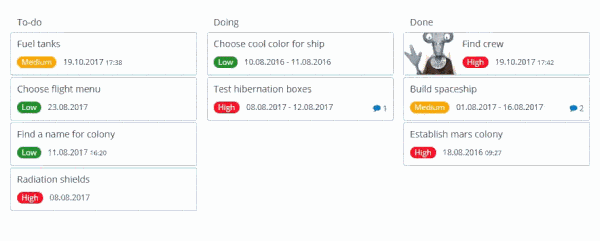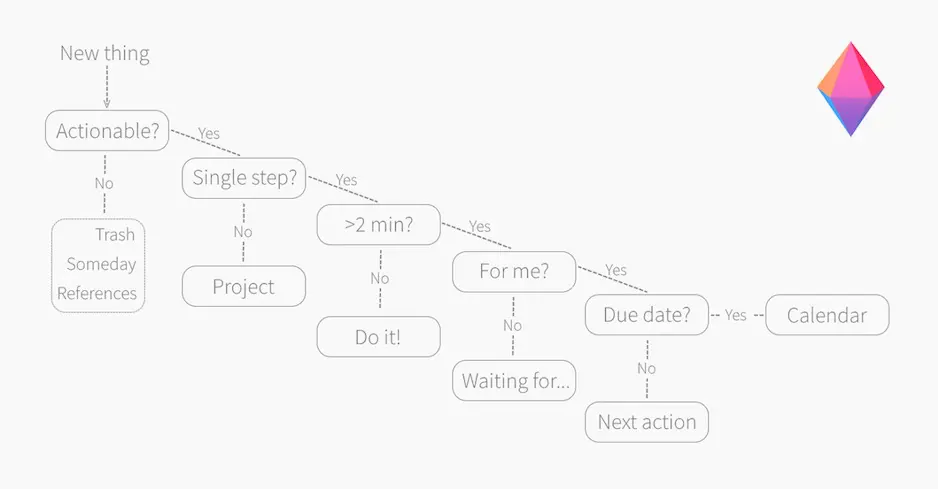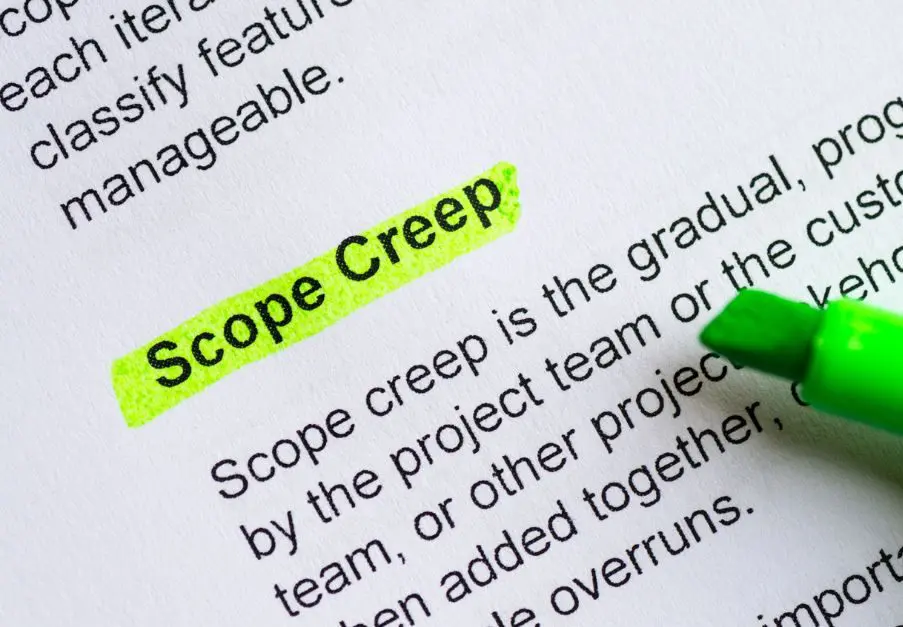
On any given day, most of us are swamped with tasks. Whether we’re working professionals, students, or stay-at-home parents, our piles seem to be never-ending.
That’s why we need task management.

In this article, I’ll discuss how task management is beneficial for both teams and individuals, and several different approaches that can be implemented for improved organization.
What Is Task Management?
Task management covers the life cycle of a task, from the development of an idea, all the way through to completion. It includes planning, tracking, testing, and reporting. Whether you’re working in a team or completing tasks on your own—in the office or at home—task management can help you accomplish your tasks in the most efficient and effective way possible.
The Perks of Task Management
Having a bunch of tasks assigned to you without a plan of attack can leave you feeling overwhelmed, disorderly, and unproductive. How do you know which task to tackle first or which task is the most urgent or important? An effective task management system can help you answer these questions. It can help you to prioritize, coordinate, and delegate tasks. It can also help you manage your time so that you meet deadlines and keep your workload balanced.
Outside of work, many of us also have a lot to do when it comes to our personal lives. From managing household chores to running errands to keeping up with social events, task management is something that is inherently done outside of the professional sphere as well.
The beauty of task management is that while our professional and personal tasks may differ, the same principles can be applied to both. For instance, the types of task management systems and approaches that are used in the office can also be applied to our personal tasks. This includes using suitable tools to get things done.

Discover the ultimate task management tool.
Sign up for free today!
Tools for Task Management
There are many tools you can use to manage your tasks. The simplest form is using a pen and notebook. While this is a fuss-free, cost-friendly option that is accessible to most of the population, it can be rather restricting compared to using task management apps because you’re limited to only what a pen and notebook can offer.
In comparison, task management software comes in various shapes and sizes, from single-focused to-do list apps to all-in-one solutions that allow you to not only visualize your tasks but also track the time you spend on them. The price tags of task management software also vary, from hefty monthly fees to free and freemium packages. So, however, if you wish to manage your tasks, you won’t be short to find an app that will cater to your situation.
The benefits of using a task management app over pen and paper include:
- You can centralize your activity, which means that everything you are working on can be available in one place, making it easier to find information and collaborate with other people.
- You can keep track of progress, which can give you an idea of how long a task will take and will allow you to keep clients and stakeholders updated on how things are coming along.
- You can access your tasks anywhere by using an app that features mobile ability (let’s face it, you’re more likely going to have your phone on you than your notebook and pen).

Task Management Approaches
There are various approaches to task management. Here are some of the more popular methods that can help you keep on top of your workload:
Agile Management
Managing your task with an agile methodology provides you with an alternative to the otherwise rigid process of linear, sequential project management methods.
In 2001, 13 experts within the software development industry got together and came up with a solution that was created as a response to the inadequacies of the then popularly used Waterfall method. What they came up with was a process where demands and solutions evolve through a collaborative effort of self-organizing and cross-functional teams, and iterative and incremental development stages, which proved to be a more fitting solution for software development.
Since then, agile methods have been adopted for all kinds of project and task management outside of software development. It offers a flexible approach which makes it ideal for anyone looking for a forgiving way to organize and coordinate their tasks. The flexibility accommodates last-minute changes and encourages collaboration with teams and stakeholders.
Kanban Management
Kanban is a highly visual scheduling system created by the management of Toyota factories in Japan in the 1940s. The method visualizes a workflow process with a Kanban board, Kanban cards, and sometimes even Kanban swimlanes. The main objective of using Kanban is to identify bottlenecks early on in the process, so as to stop them from seriously affecting the final result.
Originally intended for manufacturing, and then adapted for software development teams, it is now popularly used by any team or individual looking for a visual method of managing their tasks. While there are no solid rules of Kanban per se, its core purpose is to minimize waste, continuously improve your process, and increase overall productivity.
The most basic setup is dividing your Kanban board into three columns labelled “To-do”, “Doing”, and “Done”. Rather than self-explanatory columns, using Kanban requires you to limit the number of tasks in the middle column and focus on moving tasks into the last column.
Applying the Kanban method offers a lot of flexibility which is why it’s ideal for task management. Delegating, coordinating, and tracking tasks is made simple. Information becomes transparent, and it can also limit multitasking and reduce errors.

Eat the Frog
Sometimes, the hardest part of task management is actually getting started on your tasks. Eat the frog is a method designed to help you tackle your biggest, most difficult task first thing (and no consumption of amphibians required).
Eat the frog is a method that aims to overcome procrastination, a habit that most of us are guilty of and wish to conquer. How this works is that you prioritize your “frog” at the top of the list. The idea behind this technique is that once you have your most dreaded task out of the way, it will get the ball running and set the flow for the rest of your day.
To spot your “frog”, you can reference the Eisenhower method. By producing a matrix of need vs want, you can categorize your tasks into four groups:
- Things you have to do and don’t want to do
- Things you have to do and want to do
- Things you don’t have to do and want to do
- Things you don’t have to do and don’t want to do
Your “frog” falls within the first category. It is basically the task you need to do, but don’t have any desire to do, which is why you fall prey to procrastination.
We’ve all been in situations where we have a big task that we avoid because it’s either too daunting or boring to get started on. But this task management technique aims to help you overcome it. Imagine the sense of relief and accomplishment you will feel once the biggest task is completed first. It will make the rest of your tasks seem effortless.
Getting Things Done
Getting Things Done, or GTD for short is a framework for organizing and tracking tasks created by David Allen. The method propels you to add context and structure to tasks so that you have a higher chance of actually completing them.
The idea behind GTD is that because “your mind is for having ideas and not holding them” the method provides a way to turn your ideas into actions, and gives you a clear list of what you have to do. GTD involves following a workflow of 5 steps:
- Capture: write down all your ideas on a list (the ‘inbox’).
- Clarify: process your ideas.
- Organize: determine which ideas you can take action on.
- Reflect: assess your list on a weekly basis so that it doesn’t pile up!
- Engage: once your ideas have been captured and processed, you can start knocking things off your list.

Note: if your tasks take more than one step to complete, then they should be considered a project. If your list has more than one related task, group them together and create a project.
We’ve all created to-do lists at some point in our lives. Finishing those lists, however, is a completely different story. GTD provides a system for you to actually tick off the tasks on your to-do list. The concept is designed so that once you develop a system you can rely on, you won’t be so worried about keeping track of everything, which will then free up brain power for doing more productive things. In other words, things will get done.
Final Thoughts
While completing tasks is still doable without some sort of system in place, task management does make life easier. Whether you’ve decided on a Kanban board to visualize your tasks and follow their development, or refined lists to get things done, implementing a task management approach can ensure your tasks get done efficiently and effectively.
What’s your favourite task management approach? Don’t forget to let us know in our comment section.
Cheers,
Dinnie and the Zenkit Team





Leave a Reply